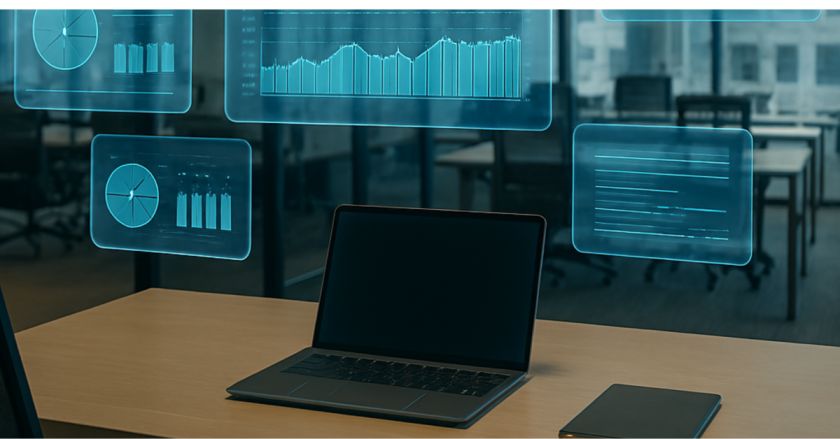Every litigation creates more liabilities for an enterprise than are visible on the surface. The legal fees are not the only cost the enterprise pays. Uncertainty, delays, and several other hidden costs put pressure on the enterprise, which quietly drains business performance.
For enterprises handling dozens or even hundreds of cases, these inefficiencies can grow into unmanageable problems, if not tackled in time.
According to ACC’s 2023 Legal Department Benchmarking Report, the legal spend of companies now averages 0.63% of the total company revenue, up from 0.56% the previous year. In any large enterprise, this amount can snowball into tens of millions of dollars every year.
The challenge in front of the enterprises is not just the volume of cases they must handle but the lack of visibility that comes with managing them across scattered systems and disconnected teams. Litigation management software addresses this gap by centralising information, automating workflows, and giving the business leaders and legal heads solid data-backed control over the overall cost and outcomes of these legal cases.
The Real Cost Of Poor Litigation Management
Behind every legal budget overrun lies a series of preventable inefficiencies. The primary reason for this is a lack of modernisation in the process. When the teams continue to rely on outdated systems and fragmented processes, the costs rise faster than anyone can expect. Here’s what typically drives that escalation:
1. Fragmented Data And Manual Processes
Legal teams of many enterprises still manage their case information using spreadsheets, emails, and manual workflows. Important data is still saved on departmental shared drives which are not accessible to stakeholders from other departments easily.
This creates silos that lead to coordination gaps and a loss of important updates. Departments with weak data practices are more likely to overspend because they lack standardized metrics and workflows.
2. Rising External Legal Spend
The Association of Corporate Counsel (ACC) benchmark 2024 shows that the median annual spend of the surveyed companies on external legal services is $1.8 million, and is $11.2 million for the top 25% of the companies.
This highlights how the dependence on multiple law firms and the absence of real-time spend visibility can quietly drive up litigation costs and reduce the control over budgets.
3. Increase In Overall Legal Costs
According to the same survey done by the Association of Corporate Counsel (ACC), the median total legal spend of the surveyed companies rose from USD 2.4 million in 2022 to USD 3.1 million in 2023.
One of the main reasons for this jump was the growing complexity of the litigation and compliance workflows. If the enterprise continues with the manual processes instead of automating them with litigation management software, these costs will keep increasing year on year.
4. Operational Inefficiencies And Missed Opportunities
Without automation, legal teams spend valuable time in looking for updates, reviewing invoices, and compiling reports instead of actually managing the outcomes of the cases. A significant amount of time is wasted in coordinating with internal stakeholders and external counsel. Staying updated with the status of thousands of cases pending in courts in multiple cities and even countries also becomes a challenge.
The cumulative effect of these inefficiencies is higher costs for the enterprise which will take a toll on their profits. This will also result in operational difficulties like rising settlement costs, slower recoveries, and limited visibility into how litigation impacts business performance. When the leadership team is not able to know where time and money are being spent, cost control becomes reactive instead of strategic. This is where the modern litigation management systems can make a measurable difference to the enterprise.
How Litigation Management Software Cuts Costs
Modern technology can help enterprises to overcome these inefficiencies and create measurable financial benefits for them. Most of the legal workflows can be automated with litigation management software, which simplifies, connects, and accelerates every stage of dispute handling.
Here’s how litigation management software can reduce the costs for an enterprise:
1. Centralised Case Tracking
The litigation management software consolidates all legal data into one system. This helps in eliminating duplication, avoiding version errors, and improving accountability.
2. Real-Time Visibility Of Spends And Budget Control
Every modern litigation management software provides real-time dashboards that track expenses across cases, law firms, and departments. This helps the legal and finance teams to detect any anomalies in the invoices and compare expenses with their approved budgets, and forecast the future costs confidently.
These dashboards also help the leadership teams to make data-backed predictions on future spending and help them to decide how and where to allocate the resources in the future. Instead of reacting to overruns after they occur, the enterprises can now actively monitor the spending patterns and keep litigation costs within planned limits.
3. Predictive Insights And Early Risk Identification
Litigation management systems have in-built AI-powered analytic tools that can identify patterns in case outcomes. They can help the legal teams to predict which disputes are likely to escalate. This feature is crucial for enterprises that want to reduce their risk exposure and take action to ensure that these cases are managed properly before they escalate beyond control.
4. Automation And Workflow Efficiency
Litigation management software automates the routine tasks like document handling, invoice review, and reporting. This enables the legal staff to focus on more important and strategic work, which improves their productivity and effectiveness manifold.
The advantages of implementing litigation software are not just limited to just reducing costs. It also helps improve operational efficiency and brings about a transparency that helps the enterprise to grow without any legal hindrances.
Strategic Benefits For Leadership
For the CXOs and Chief Legal Officers, cost saving is not the last stop. What truly matters to them is predictability, visibility, and alignment between legal strategy and business goals. With litigation management software in place, leadership gains the data and control needed to turn legal operations into a strategic advantage rather than an expense line.
1. Cost Predictability And Financial Control
Real-time dashboards and analytics provided by the litigation management software show how the budgets are being spent in a transparent way. Thomson Reuters reports that 65% of departments now use analytics to track spend and performance. This allows the CFOs and CLOs to plan, forecast and anticipate the expenses with precision rather than react to invoices as and when they come.
2. Business Agility And Cross-Functional Collaboration
When legal data is shared across departments, the teams are able to make business decisions faster and with all the information that they need. The litigation management software stores all the information centrally in a shared database.
This ensures that all the relevant stakeholders across departments and geographies can access data on demand and can share the information with each other without needing to resort to emails and spreadsheets.
The cross-functional collaboration features provided by the litigation management system ensure that no important information is missed and all the stakeholders remain updated about the latest progress of the cases.
3. Data-Driven Decision Making
Predictive insights generated by the litigation management systems provide useful predictive insights the business leaders can use to understand their legal operations better. Some such useful metrics generated are counsel performance, recurring risk areas, and patterns in case outcomes.
The enhanced visibility from these metrics will help the legal teams make data-backed decisions related to reallocating budgets, identifying high-performing counsel, and anticipating potential disputes. Having these strong data analytics and predictive insights will bring in measurable cost savings, and increase the operational efficiency of the enterprise.
4. The Legal Function As A Strategic Enabler
When all performance metrics, costs, and outcomes are transparently visible to the management, the legal function moves from being a support function to a strategic contributor to the growth of the enterprise. This is one of the biggest impacts of implementing a litigation management system.
It allows the leadership team to view legal performance in the same way as they evaluate the results and accountability of other departments like finance or operations.
With this visibility, the legal department is no longer seen as a cost centre. It becomes a trusted business function that helps the enterprise manage exposure, protect revenues, and make informed, forward-looking decisions.
Litigation control should not depend on spreadsheets or scattered updates. Legistify’s Litigation Management Software gives the enterprises a single, intelligent platform where they can manage every case, court, and counsel efficiently. The system connects data, automates processes, and predicts risks before they turn into expenses, giving leadership the clarity to make faster and smarter decisions.
Built with enterprise needs in mind, Legistify helps enterprise legal teams manage multi-jurisdictional litigation, track performance, and measure the business impact of their operations. It brings together compliance, risk, and cost management under one unified platform which grows with your organisation.
Want to see how predictive legal intelligence can simplify your operations and reduce costs for your enterprise? Book a demo of Legistify’s Litigation Management Software and experience its capabilities today.




